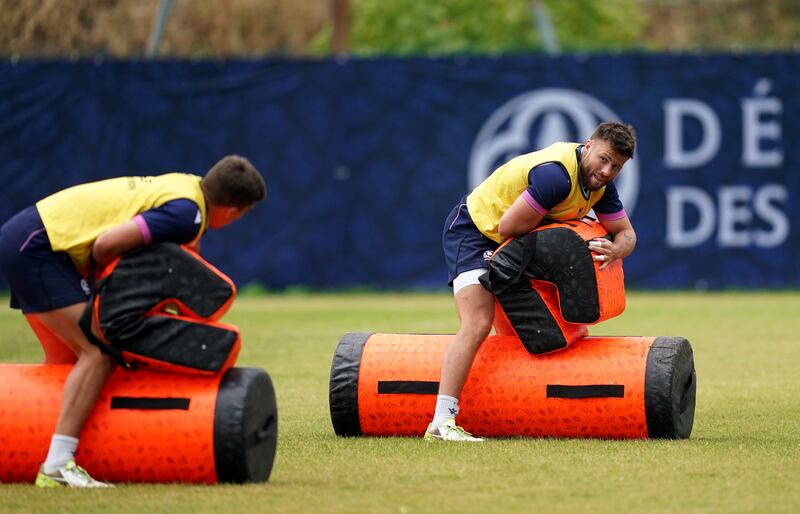The trams in Nice run through acres of grass across the city and out to its furthest reaches.
Sitting in the front carriage and peering forwards out through the driver’s window, the thin lines of rail set into the grass become barely visible. The tram appears to be gliding over acres of green lawn broken only at the intersections where other traffic must cross the tracks.
Tram tracks in many European cities are lined with grass, a practice that started in the 1980s. They were conceived to bring greenery back into lifeless, colourless city spaces and at the same time provide more habitable zones for wildlife.
There are other benefits in the parcels of growth which run like green athletics tracks curving around and past buildings and arcades. In Nice, it disappears underground for a little bit before emerging near to the promenade and parallel with the seafront, where you get flashes of the Mediterranean Sea at each intersection as it steers towards the airport to the coastal side at Grand Arenas and inland to where Scotland chose their training ground.
READ MORE
We’ve all become experts on intercity travel and picking the best ways through the streets and roads that we had never walked before. In that the trams and trains have been a huge feature and vital working tool of France 2023, where organisers have baked moving around the country and through cities into the World Cup cake.
For the pool stages, teams have been based in 20 different locations and have been required to travel to others for weekend matches, sometimes at the other end of the country. Trams in the cities that are staging the weekend games have been the most efficient way of getting to team hotels and match venues.
Generally, the stadiums are close to or at the end of lines. They have been in Nice, Bordeaux, Nantes and Paris with Stade de France out in the northern metro fringe of St Denis.
The stadium in Bordeaux and in Nantes was near the tram terminus and Stade de Nice, one stop before the end of the line. Generally, the team hotels have also been located deep in the suburbs away from distractions and not easy to access.
Of those visited, South Africa’s team base in Toulon was at odds with the others in that the grand-looking hotel had a private garden gate at the side of the building that opened onto the beach, where there was a bustling a row of cafes and restaurants. Maybe it was the closest thing to Cape Town sur Mer on World Rugby’s list.
Scotland’s chosen base could have been as glamorous as the Springboks and located near water, but they chose differently, settling on a local club far from the city called Stade des Arboras. The sign for the Nice city limits is located on the main road in front of the entrance.

Last week Scotland trained in Stade des Arboras and then travelled to the north of France to play against Romania in Lille, over 800 kilometres away. They were back in Nice this week training in the same stadium before they took another plane and arrived in Paris on Thursday.
The Irish base in Paris was also a trek. An ‘A’ line RER train to a place called Busy Saint-George and then a local bus for two stops or a €10 Uber journey to the team hotel. That or, Google Map it and walk.
Almost always, the time taken to get to and from venues requires much of the working day, an undisclosed aspect of life at a Rugby World Cup or Olympic Games.
The ability to get to where you need to be becomes an all-consuming part of the daily ritual. The idea of sitting outside a café leisurely tapping out an instalment for the next day’s newspaper reaches into the fantasy end of the business. It died with the arrival of online traffic and the immediacy aspect to modern journalism.
How long it takes, what route you use, how much it costs to get to a rugby stadium has been an overarching aspect of France 2023. It was not as big a part of London 2015, where Newcastle United’s ground, St James Park, was probably the furthest venue from London at around 400km. Matches were also played in Cardiff, a trifling two hours by train from the capital.
That said, the plush England training ground in 2015 was a tube ride to Waterloo Station and a train journey deep into the stockbroker belt of Surrey before a weary hike from the local station took you up to the team base in the Penny Hill Park Hotel.
In Nice, the attitude is if you must cross the city then ride along the greenways, which also reduce the heat effect and provide an absorbent surface for storm water, essential in a city where rain tends to arrive in violent downpours. They say the grass also absorbs some of the noise generated by the grinding of metal wheels on metal tracks.
Now, as the TGV pulls into Gare de Lyon, the drumbeats tell us the Irish team hotel, a two-hour commute to Vanneaux, Ile-de-France outside Paris is the most challenging yet. The only question is which direction, what metro and which RER train or tram to get there, or maybe all three.
















